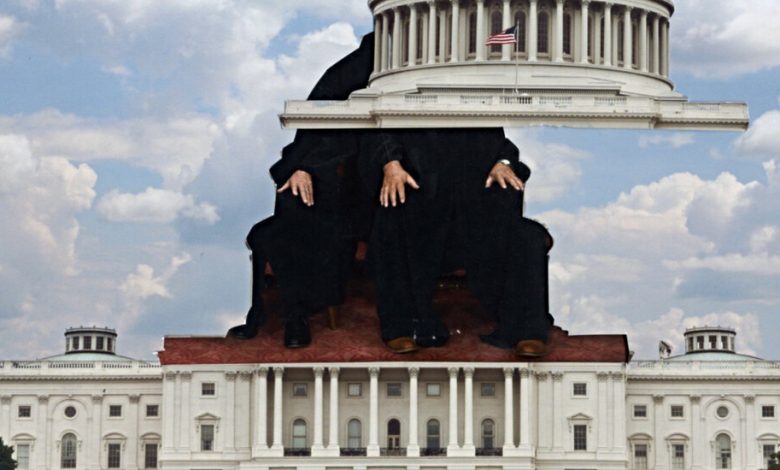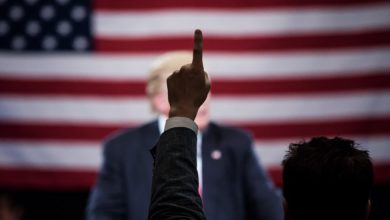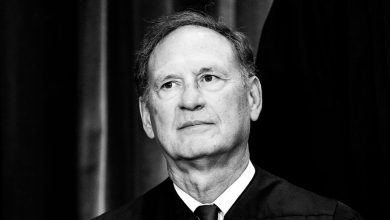The Quiet Blockbuster at the Supreme Court Could Impact All Americans

Some Supreme Court terms are characterized by a single blockbuster case. This term largely revolves around a single blockbuster question: Will our government retain the capacity to address the most pressing issues of our time?
That’s what’s at stake in a group of cases involving the power, capacity and in some instances the very existence of federal agencies, the entities responsible for carrying out so much of the work of government.
“Administrative law” may sound dry and dusty. Justice Antonin Scalia once advised an audience to “steel yourselves for a pretty dull lecture” on that topic. But the administrative power cases pending before the court this term involve issues that touch the lives of every American.
They involve the government’s ability to study and approve the safety and efficacy of the drugs we take; its power to protect consumers, enforce the securities laws and safeguard the nation’s waters; and ultimately to respond in innovative ways to the climate emergency. The outcome in these cases may even affect more obvious hot-button issues like guns and abortion.
It’s been clear for some time that several conservative justices harbor deep skepticism about the administrative state. That’s perhaps no surprise: The three senior conservatives on this court all cut their teeth as young lawyers in the anti-regulation Reagan administration, and the court’s newer conservatives were appointed by Donald Trump, whose adviser Steve Bannon proudly announced that a goal of that administration was the “deconstruction of the administrative state.”
Under the court’s current conservative supermajority, the project of dismantling the administrative state is already well underway. This has largely happened through the court’s use of what it terms the “major questions doctrine,” a novel principle the court has wielded to prevent agencies from taking actions of significant political or economic importance if they cannot point to explicit authorization from Congress.
Using this doctrine, last year the court kneecapped the Environmental Protection Agency by limiting its ability to enforce the Clean Air Act in West Virginia v. E.P.A. It further curtailed agency power this year inBiden v. Nebraska, when it struck down an initiative by the administration’s Department of Education that would have canceled significant quantities of student debt.
Those decisions followed early-pandemic cases in which the court struck down agency efforts to respond to the public health emergency (though the court did not use the term “major questions doctrine” in a majority opinion until 2022). It refused to allow the Centers for Disease Control and Prevention to temporarily stop certain evictions and barred the Occupational Safety and Health Administration from imposing a test-or-vax mandate on large employers.
Perhaps the most important case this term is Loper Bright Enterprises v. Raimondo, scheduled for oral arguments in early 2024, in which the plaintiffs are asking the court to overrule the best-known case in administrative law, Chevron v. Natural Resources Defense Counsel. InChevron, the court announced a rule that directed federal courts to defer to reasonable agency interpretations of statutes they administer. That is, if a statute is silent or ambiguous on a particular question, courts aren’t supposed to write on a blank slate about what the statute means — if an expert agency has already provided an answer to the question, and it’s a reasonable one, the court is supposed to defer to that interpretation.
In the 1984 Chevron case itself, the court deferred to a Reagan-era E.P.A. rule challenged by environmentalists, and the case once counted conservative stalwarts like Justice Scalia and Justice Clarence Thomas among its defenders. (In his “dull” lecture, Justice Scalia explained that the rule of Chevron “accurately reflects the reality of government” and “adequately serves its needs.”)
But Chevron has become a bête noire in conservative circles. Justice Neil Gorsuch largely rose to national prominence by writing anti-Chevron screeds when he was a lower-court judge, in one describing Chevron as “hard to square with the Constitution of the founders’ design,” and as giving “prodigious new powers to an already titanic administrative state.” The Supreme Court has increasingly ignored the decision, even in cases in which it seems clearly relevant.
The specific issue in Loper Bright involves the meaning of a statute that authorizes a federal agency, the National Marine Fisheries Service, to require commercial fishing vessels to carry observers on board ships — part of an effort to respond to the problem of overfishing. The question is who bears the cost of these onboard observers. The statute doesn’t say, and the agency has concluded that under some circumstances, the individuals on whose boats the observers are carried have to foot the bill. The lower court here deferred to that agency interpretation, invoking Chevron.
The plaintiffs in this case, four self-described family-owned herring fishing companies who say that the bills for onboard observers can run as high as 20 percent of their annual returns, are unquestionably deserving of sympathy. But at issue in the case isn’t the wisdom of this particular regulation. It’s the power of government to make decisions with an eye to the collective good.
In its brief in the case, the federal government argues that overruling Chevron would represent a “convulsive shock to the legal system.” It explains that the federal government, as well as regulated parties and the public, “have arranged their affairs for decades with Chevron as the backdrop against which Congress legislates, agencies issue rules and orders, and courts resolve disputes.”
But with this court’s demonstrated eagerness to upend settled law and practice, it’s not clear that these concerns will get much traction. Many observers expect that when it decides the case, the court will deal the Chevron precedent a death blow.
Doing so would be a serious mistake. Statutes are never going to cover every conceivable scenario or application. A statute might give an agency the power to require employers to take steps that are “reasonably necessary or appropriate to provide safe or healthful employment.” It might empower an agency to decide who is an “employee” for purposes of various provisions of labor law. Or it could require retail stores to provide information on particular food items, then empower the F.D.A. to determine whether stores are in “substantial compliance” with that requirement.
Whatever the topic, there will always be gaps and ambiguities; the only question is who will fill those gaps and interpret provisions that contain ambiguities — expert agencies or courts. Agencies aren’t by any means perfect. But Congress has long drafted statutes with an understanding that agencies will be the first-line interpreters, and as between agencies and courts, it’s clear that agencies, which are more expert and more politically accountable, should have the advantage.
If the court does overrule Chevron, it matters a great deal what, if anything, the court offers in its place. If the court preserves the notion that agencies have a key role to play in interpreting laws, and that under most circumstances agency interpretations should carry significant weight with courts, it might not matter much that the court technically disavows the Chevron test. But abandoning the notion of deference to agencies in the interpretation of statutes would result in an enormous expansion of the power of courts — in particular, the power of a Supreme Court that has shown itself to be singularly hostile to agency action.
Other cases this term could have serious implications for particular agencies and for government more broadly. In S.E.C. v. Jarkesy, the court is considering the argument that aspects of the way the Securities and Exchange Commission enforces the securities laws are unconstitutional for three separate reasons — that the agency brings before administrative law judges actions that should actually be resolved by juries; that administrative law judges have too much protection from presidential control; and that a statute that gives the agency much of its authority violates what’s called the nondelegation doctrine.
That idea is closely related to the major questions doctrine, but goes even further, not only requiring agencies to identify explicit statutory authorization for major actions but also, in many instances, finding that agencies cannot take major actions at all. If embraced in its entirety, the nondelegation doctrine could spell the end of agency power as we know it, turning the clock back to before the New Deal.
In another case, this one argued in early October, the court is considering the truly radical argument that the funding structure of the Consumer Financial Protection Bureau is unconstitutional. In 2020, a 5-4 court ruled part of the structure of the C.F.P.B. unconstitutional, but the agency was able to continue functioning. In this challenge, the federal government argues that the challengers’ position, if accepted, would not only mark the end of the C.F.P.B. but would also “invalidate much of the federal budget.” It might also throw into question the constitutionality of other federal agencies, including potentially the Federal Reserve.
In yet another case about agency power, either this term or next, the court is likely to take up a challenge to the Food and Drug Administration’s approval and subsequent regulation of mifepristone, one of the drugs used in medication abortion, the most common method of abortion in the country. The Supreme Court has put on hold lower court rulings that invalidated parts of the F.D.A.’s approval, but that’s no guarantee of how the court would ultimately rule in the case. A decision even partly siding with the lower courts would not only have catastrophic consequences for access to abortion; it would also, according to a number of drug manufacturers, result in a dramatic shift in drug development and approval processes — which would have implications, the manufacturers say, for their ability to invest in and develop new medicines. It would furthermore likely destabilize the F.D.A.’s approval process, which has long been seen as the global “gold standard” of drug safety.
In some of these cases, the challengers claim that they are the ones on the side of democracy — that by seeking to gut the power of agencies, they are merely trying to return power to Congress, the branch of government that is the most democratically responsive and accountable. But embracing these arguments would not result in the court returning power to Congress but claiming enormous and novel powers for itself.
Because these moves have been made gradually, often in cases that fly under the radar, it’s easy to miss just how quickly and dramatically the Supreme Court has moved the law in this area — and it’s far from finished. To be clear, the court may turn away some of the challenges discussed above; a mortal wound to the administrative state may not come this term at all. Chief Justice John Roberts is a shrewd political actor, and he likely appreciates that the political consequences of ending access to mifepristone, or adopting a theory that could doom the Fed, could damage Republican fortunes in a presidential election year.
But a full embrace of the conservative majority’s crabbed vision of the role and power of government would have seismic consequences for all of us.
The Times is committed to publishing a diversity of letters to the editor. We’d like to hear what you think about this or any of our articles. Here are some tips. And here’s our email: [email protected].
Follow The New York Times Opinion section on Facebook, Twitter (@NYTopinion) and Instagram.





